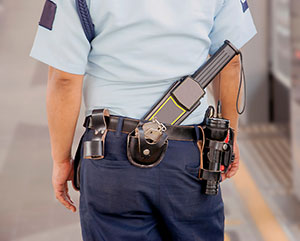Intro to the American Criminal Justice System
Unlike in most countries, the United States criminal justice system is not represented by a single, all-encompassing institution. Rather, it is a network of criminal justice systems at the federal, state, and special jurisdictional levels like military courts and territorial courts. Criminal laws at these levels vary, although these are all based on the US Constitution.
The federal criminal justice system handles cases that are national in scope: treason, espionage, assassination of top-level government officials, among others. Meanwhile, state criminal justice systems handle crimes that have taken place or, in certain situations, have evident involvement in the state. The same process goes for the criminal justice systems within special jurisdictions.
Components of the Criminal Justice System
As with any mechanism, the criminal justice system involves the coordinated functioning of its distinct parts. The ideal result is making offenders pay for, and repent, their criminal acts while delivering recompense to the victims. The three components of the criminal justice system are:
Law Enforcement
The wheels of law enforcement start grinding when a crime is detected. Detection takes place when the concerned law enforcement body (police force or specialized agency) receive a report from the victim or a witness, or catch the crime perpetrator. Thereafter, the law enforcers verify the information furnished and proceed with the investigation.
Law enforcement duties include: arresting suspected offenders, gathering and preserving evidence, establishing the motive, and completing police/arrest reports by stating results of the investigation. Responsibilities include: upholding the rights of offenders, victims, and witnesses; and conducting police procedures within rules prescribed by law.
At the federal level, there is a law enforcement body designated to cover particular areas of criminal law. One example would be the US Department of Homeland Security, which addresses the problem on human trafficking. Another would be the US Department of Justice (DOJ), which is made up of agencies like the FBI that has police powers over crimes of significant nationwide impact like terrorist acts.
Meanwhile, state and other local-government police organizations vary in structure, as well as in names. However, the mission is the same as the others': to enforce laws, maintain peace and order in the communities they serve, and provide their constituencies safety and security.
Adjudication
The adjudication of a criminal case involves court processes. In plain terms, adjudication refers to the legal process by which a judgment is pronounced by the court to the parties in a case. As with the law enforcement component of the criminal justice system, the courts are organized at federal, state, and special-jurisdiction levels.
Pretrial services- The adjudication process starts when the law enforcement body has submitted the police/arrest report to the prosecutor. The prosecutor, in turn, determines whether or not the incident will prosper into a criminal case, in which the suspected offender will be charged with the crime. It is not uncommon for the prosecutor to drop or dismiss charges altogether, for reasons that include: lack of evidence and weak police investigation. It is the prosecutor that takes the side of the victim and, accordingly, the state (society or community), which the crime has also affected.
Arraignment- If the prosecutor decides to press charges against a suspected offender, the adjudication process advances to arraignment. During arraignment, the suspect is read the charge/s filed against him or her. With the aid of a legal counsel, the suspect (now a defendant) enters a plea of either guilty or not guilty.
Trial- The arraignment progresses into trial to determine the guilt of the suspect (if the not-guilty plea was not entered). In the event of a guilty verdict, the offender is convicted and the court will determine the sentence.
A trial is characterized by an argument that has two sides: the prosecution and the defense. On the one hand, the prosecution represents the interests of the victim and , in effect, the society (or state) that the offender is suspected to have violated. On the other, the defense asserts the innocence of the offender and labors to get the offender acquitted.
A trial often results in an appeal, in which the disadvantaged side (prosecution or defense) will try to shift the advantage. In this instance, the case is elevated in a higher court, which either upholds or overturns the earlier decision.
Sentencing- A court conviction corresponds to a sentence, which is the penalty imposed on the offender who has been found guilty as a result of the preceding trial. The sentence is meted out by the judge, who follows prescribed guidelines, standards, and limitations in punishing convicts.
Death Penalty- Generally, United States laws permit the death penalty for convicts who have committed heinous crimes, although the practice of capital punishment is on a case-by-case basis.
In principle, the Federal Death Penalty Act of 1988 sentences to death all offenders convicted of homicide. But in practice, capital punishment is more an exception than the rule. For example, most of the convicted terrorists on death row have yet to be meted out their sentences.
Corrections
The third component of the criminal justice system is corrections. While it implies reform and rehabilitation, corrections encompasses all sentenced offenders, including those who are on death row.
Federal and state criminal justice systems hold “corrections” as the replacement for “penology” that many find harsh and unforgiving. In any case, the corrections component manages incarcerated convicts and those who are conditionally released, as well as those who are merely slapped with punishments that do not require imprisonment but who need supervision anyway.
The corrections network includes publicly run and privately operated institutions, along with the personnel and other stakeholders, and its administration must adhere to lawful standards. The process involves reform and rehabilitation programs to prepare eligible convicts for reentry and reintegration into society as free individuals.








